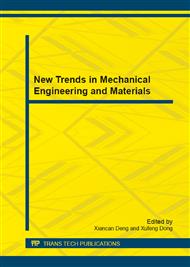p.416
p.421
p.426
p.431
p.436
p.442
p.446
p.450
p.455
RAP Percentage and Warm Mix Additive Influence on Regenerated Asphalt Mixture Performance
Abstract:
The warm mix regeneration technology has prominent economical efficiency that can not only reduce the secondary aging of new asphalt and old asphalt in RAP materials during the production process, but also improve the use proportion of RAP materials. As for the increase of RAP dosage and the warm mix additive added to influence the plant regenerated asphalt mixture performance, this paper adopts two kinds of warm mix additive for the test and analysis of the warm mix regenerated asphalt mixture performance with 20% and 60% RAP. The results indicate that magnify the proportion of RAP percentage makes contribution to further improve high-temperature performance of the regenerated mixture, but it has adverse effects on water resistant damage performance and low-temperature performance. At the same time, adopting the warm mix additive can significantly reduce the adverse effect, so warm mix regenerated technology has better feasibility.
Info:
Periodical:
Pages:
436-441
Citation:
Online since:
December 2012
Authors:
Price:
Сopyright:
© 2013 Trans Tech Publications Ltd. All Rights Reserved
Share:
Citation:


